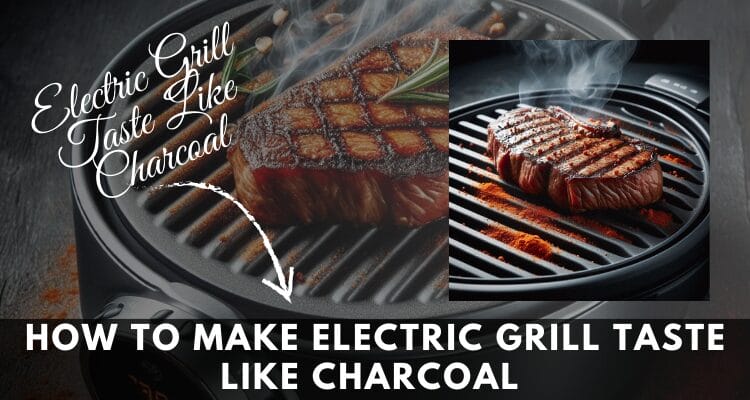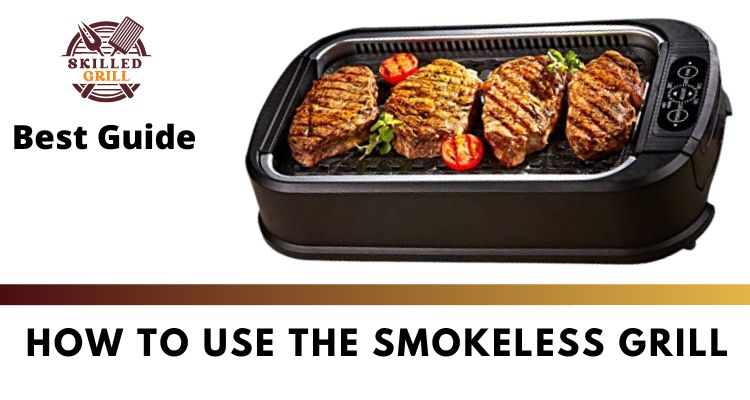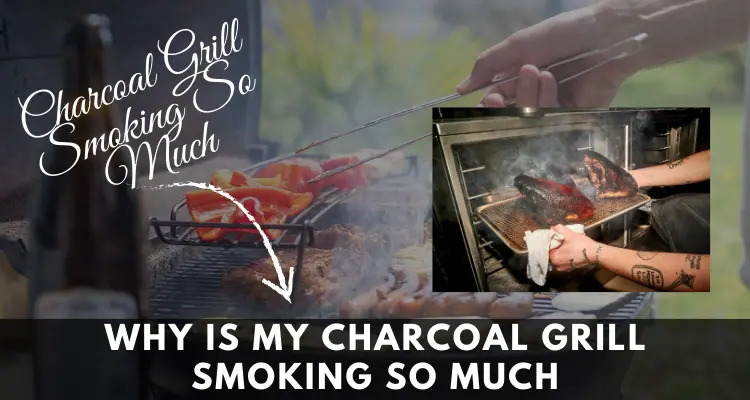How Does Pellet Grill Work || Different Methods
There’s nothing quite like the delicious taste of perfectly grilled meat, hot off the grill. However, traditional charcoal
A pellet grill uses an automated system to feed wood pellets into a heat source, producing consistent temperature and smoke for cooking. The process involves heating the pellets to create smoke, which is then circulated around the food for flavor. This allows for easy, hands-off grilling with precise control over temperature and smoke levels.
In my experience, using a pellet grill has been an absolute game changer for my outdoor cooking. The way it works is by using an automated auger to feed compressed wood pellets into a fire pot, where they are ignited by a heating element. This creates consistent and precise heat, allowing for even cooking and delicious flavor infusion in your food.
In this article, we will dive deeper into the mechanics of how pellet grills work and why they have become a popular choice for outdoor cooking enthusiasts.
So Lets Get Started!
The Pellet Grill Components
A pellet grill consists of several main components that work together to create the perfect cooking environment. These include:
Hopper
The hopper is where the wood pellets are stored before being fed into the grill. Some pellet grills have a large capacity hopper, allowing for longer cook times without needing to refill.
Auger System
The auger system is responsible for moving the pellets from the hopper and into the fire pot. It works similarly to a screw conveyor, with rotating blades that push the pellets forward as they rotate.
Fire Pot
The fire pot is where the pellets are ignited and burned, creating heat and smoke for cooking. The temperature of the grill can be controlled by adjusting the amount of pellets fed into the fire pot.
Control Panel
The control panel is where you can adjust the temperature and other settings on your pellet grill. It is usually equipped with digital controls for easy and precise temperature control.
Cooking Grates
The cooking grates are where the food is placed for cooking. They can come in various materials such as stainless steel, cast iron, or porcelain-coated steel.
How Does a Pellet Grill Work
Now that we have covered the main components of a pellet grill, let’s take a closer look at how they work together to create the perfect grilling experience.
Pellet Loading
To start the grilling process, you will need to fill the hopper with wood pellets. These can come in a variety of flavors such as hickory, mesquite, or applewood for different smoke profiles.
Once the hopper is filled, the auger system will begin to move the pellets into the fire pot based on the temperature set on the control panel.
Ignition and Combustion
When the pellets enter the fire pot, they are ignited by a heating element. This creates a flame that will continue to burn as long as there are pellets in the fire pot.
As the pellets burn, they create heat and smoke which is then circulated around the food on the cooking grates. The amount of smoke produced can be controlled by adjusting the temperature and amount of pellets in the fire pot.
Temperature Control
One of the biggest advantages of using a pellet grill is its precise temperature control. The digital controls on the control panel allow you to set and maintain your desired cooking temperature, taking out the guesswork and ensuring consistent results every time.
Automatic Feed System
The automated auger system and hopper work together to maintain a steady supply of wood pellets for cooking. This means you can set your desired temperature and let the grill do the rest, without having to constantly tend to the fire.
Cleaning
After cooking, it is important to clean out any remaining ash from the fire pot and empty the hopper of any unused pellets. This will help keep your pellet grill in good condition and prevent any buildup that may affect the performance.
What are the benefits of using a pellet grill?
There are several benefits to using a pellet grill, making it a popular choice among outdoor cooking enthusiasts. Some of these include:
1: Versatility
Pellet grills offer a wide range of cooking options, from low and slow smoking to high heat grilling. This makes them perfect for cooking a variety of foods such as meats, vegetables, and even desserts.
2: Ease of Use
With its automated system and precise temperature control, pellet grills are incredibly easy to use. This makes them great for beginners and experienced grillers alike.
3: Consistent Results
The controlled temperature and smoke levels of a pellet grill ensure consistent results every time, without having to constantly monitor the food or adjust the fire.
4: Flavor Infusion
The use of wood pellets in a pellet grill gives your food an amazing smoky flavor. With a variety of wood flavors to choose from, you can experiment and create unique flavor profiles for your dishes.
5: Energy Efficient
Pellet grills are energy efficient as they use a small amount of electricity to run the auger system and fan, and only require a small amount of pellets for cooking compared to charcoal or gas grills.
5 Other Methods of pellet grill work
While we have mainly discussed the traditional pellet grill, there are also other methods of cooking with pellets that offer a similar experience. These include:
Pellet Smoker
Similar to a traditional pellet grill, a pellet smoker uses wood pellets for heat and smoke. However, it is designed specifically for low and slow smoking at lower temperatures for longer periods of time.
Pellet Griddle
A pellet griddle works similarly to a traditional griddle but uses wood pellets as the heating source. This allows you to cook your food at high temperatures while also infusing it with a smoky flavor.
Pellet Oven
A pellet oven is like a traditional wood-fired pizza oven, but instead of burning logs, it uses pellets. This creates the perfect environment for cooking pizzas and other baked goods with a delicious smoky flavor.
Pellet Stove
Pellet stoves are used as an alternative to traditional wood stoves for heating homes. They use wood pellets as fuel and have automated systems for easy use and maintenance.
Pellet Burner
Similar to a pellet stove, a pellet burner is used in industrial settings to burn biomass pellets for heat and energy production. These can be used in industries such as agriculture, manufacturing, and electricity generation.
How to use Pellet Grill Successfully
To get the most out of your pellet grill, here are some tips for successful grilling:
1: Preheat the Grill
Just like with any other grill, it is important to preheat your pellet grill before cooking. This allows for even heating and helps prevent food from sticking to the grates.
2: Experiment with Flavors
Don’t be afraid to experiment with different wood pellet flavors to find your favorite. Different woods can add unique flavors to your food, so have fun trying them out.
3: Use a Meat Thermometer
To ensure your food is cooked to the perfect temperature, use a meat thermometer rather than relying solely on the grill’s temperature gauge.
4: Clean Regularly
To maintain optimal performance, regularly clean out the fire pot and empty the hopper of any unused pellets. This will also prevent any unwanted flavors from building up in the grill.
Experiment with Different Flavors and Cooking Methods
One of the greatest advantages of using a pellet grill is the ability to experiment with different flavors and cooking methods. Here are some ideas to get you started:
1: Try Different Wood Pellet Flavors
As mentioned before, different wood pellets can add unique flavors to your food. Consider trying out flavors such as mesquite, hickory, or applewood to see which one you like best.
2: Add a Smoker Tube for Extra Smoke
For an even smokier flavor, consider using a smoker tube in addition to the pellets already in the fire pot. This will add more smoke and enhance the overall flavor of your food.
3: Use Foil Packets for Infused Cooking
Create foil packets filled with herbs, spices, and even wine to infuse your food with extra flavor while it cooks on the pellet grill.
4: Experiment with Direct and Indirect Heat
Some pellet grills come with a searing option that allows for higher heat cooking. Try experimenting with this feature along with indirect heat for different textures and flavors in your food.
Conclusion
To sum it up, pellet grills are a versatile and easy to use option for outdoor cooking. Whether you’re a beginner or an experienced griller, the benefits of using a pellet grill make it worth trying out. With the ability to add unique flavors and experiment with different cooking methods, the possibilities are endless when it comes to creating delicious meals on a pellet grill.
FAQs
Are pellet grills suitable for beginners?
Absolutely! Pellet grills are known for their ease of use. The precise temperature control and automatic pellet feed system make them beginner-friendly. You’ll achieve consistent results without extensive grilling experience.
Can I use pellet grills for cold smoking?
Yes, pellet grills can be adapted for cold smoking. By using additional accessories like a cold smoke attachment, you can achieve the low temperatures required for cold-smoking cheese, fish, and other delicate foods.
How do I clean a pellet grill?
Cleaning a pellet grill is relatively simple. Regularly remove ash and clean the grill grates. Some models come with an ash cleanout system, making the process even more convenient.
Are pellet grills suitable for large gatherings?
Pellet grills with a generous cooking surface are perfect for hosting large gatherings. You can cook various dishes simultaneously, ensuring everyone’s preferences are met.
Do I need to buy specific wood pellets for my grill?
Yes, it’s essential to use wood pellets designed for grilling. They are free from additives and chemicals, ensuring a pure, natural smoky flavor for your food.
Can I sear meat on a pellet grill?
While pellet grills are excellent for slow cooking and smoking, they may not achieve the high searing temperatures of traditional grills. To sear meat, you can use a cast-iron skillet or a dedicated sear box attachment.






